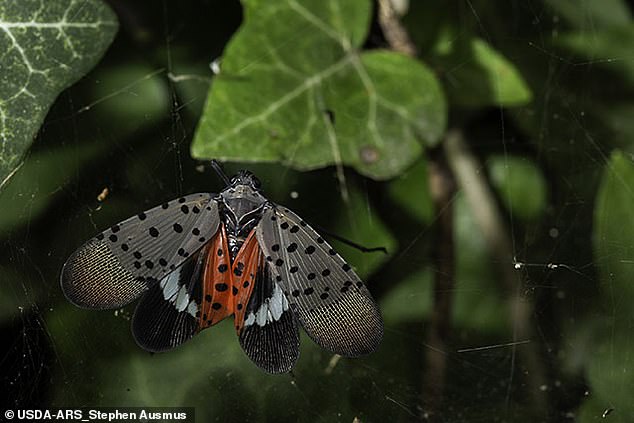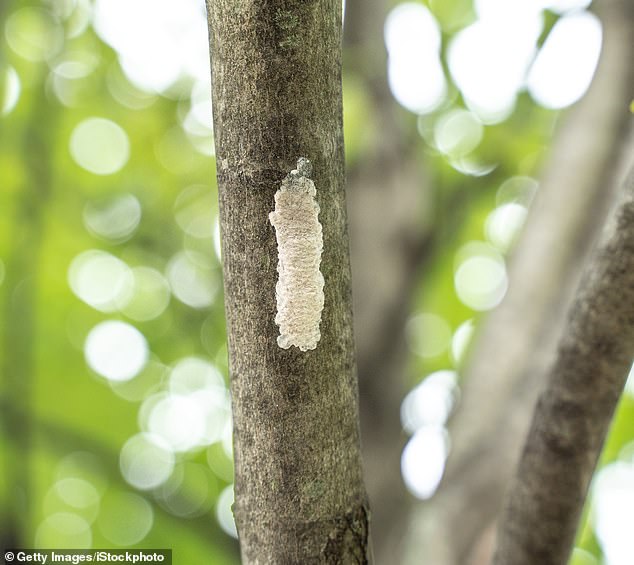America’s wine supply is in serious danger after invasive species hitchhiked from New York to California
An invasive species that hitchhiked from New York to California could endanger U.S. wine production.
Officials recently found a mass of spotted lanternfly eggs a metal art installation headed to Sonoma County to mark the first sighting of the insects in the Golden State.
The California Association of Winegrape Growers (CAWG) has warned that the eggs are likely to produce adult insects in the coming weeks that “have the potential to impact the entire winegrape industry.”
The Asian native insects, which destroy crops, could kill grapevines, which would result in higher prices in the U.S. since California is responsible for about 80 percent of the country’s total wine production.
California is responsible for approximately 80 percent of the country’s total wine production
Natalie Collins, president of CAWG, said: ‘This is essentially a public service announcement to raise awareness of how to identify a spotted lanternfly and the immediate action to take if it is discovered.
“Spotted lanternflies have been found in 18 states and have proven to be a serious threat to vineyards.
‘These invasive insects feed on the sap of grapevines, while also leaving a sticky honeydew residue on the bunches and leaves.
‘Their activities stress the plants, reduce the health of the vines and in some cases can lead to plant death.’
The U.S. Department of Agriculture (USDA) issued a warning in March about spotted lanternfly eggs, which look like spongy brown masses that stick to cars, trees and most hard surfaces.
USDA officials recommend scraping the eggs from the surface, placing them in a plastic bag and throwing the bag in the trash — this ensures none survive.
Nymphs typically hatch from eggs in the summer and mature in the fall, when California’s grape harvest season occurs.
Spotted lanternflies are known to feast on more than seventy species of plants, leaving behind a black resin that weakens vegetation.
Pennsylvania was the first to discover the insect in 2014, and just five years later it was found that the one-inch insect was costing the state $50.1 million annually.

Officials recently found spotted lanternfly eggs on a metal art installation en route to Sonoma County, one of California’s most prized wine regions, marking the first sighting of the invasive insect in the Sunshine State
Now California officials fear the insect’s presence could destroy its iconic wineries.
A Border Protection station discovered 11 viable egg masses while inspecting a 30-foot art installation shipped from New York where the spotted lanternflies have already found a permanent home.
The discovery was made in March, but the CAWG made the announcement on June 10.
The staff rejected the shipment and rerouted it to Nevada, where another 30 egg masses were found.
The art was then washed with detergent and sent back on its way to California, the association said.
However, when the art reached Sonoma County on April 4, officials found three more egg masses tucked into the sacred beams.

A Border Protection station discovered 11 viable egg masses while inspecting a 30-foot art installation shipped from New York where the spotted lanternflies have already found a permanent home
The other states plagued by pests are Connecticut, Delaware, Indiana, Maryland, Massachusetts, Michigan, New Jersey, New York, North Carolina, Ohio, Rhode Island, Virginia and West Virginia.
It is believed that the spotted lanternfly came to the US as egg masses on a shipment of rocks that originated in China.
Both nymphs and adults of the spotted lanternfly cause damage as they feed and suck sap from stems and branches. This can reduce photosynthesis, weaken the plant and ultimately contribute to the plant’s death.
In addition, feeding can cause the plant to ooze or weep, resulting in a fermented odor, and the insects themselves excrete large amounts of moisture called honeydew.
These liquids promote mold growth and attract other insects.
